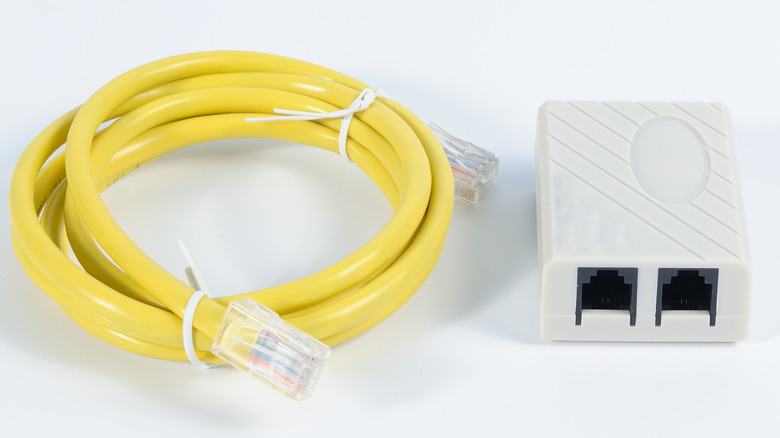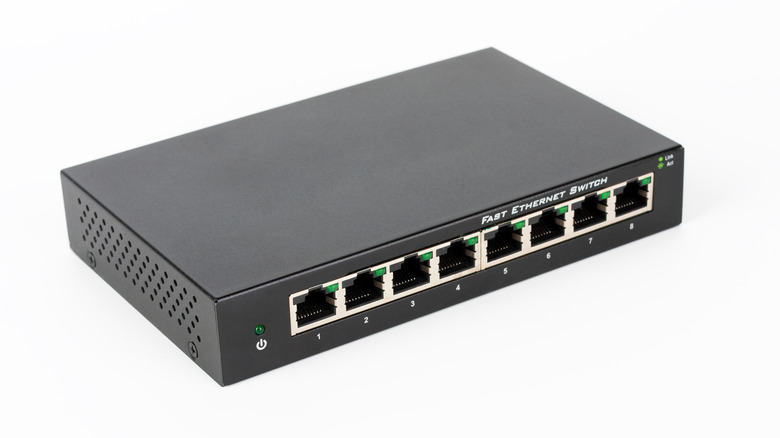Ethernet Splitter Vs. Switch: The Difference And Which Makes Sense For You
We may receive a commission on purchases made from links.
There's no denying that society has become dependent on Wi-Fi. Sometimes, however, you need the speed, stability, and security that only a wired network can provide. However, what happens when you're running out of Ethernet ports and still need to connect an additional device or two? You'll need to choose between an Ethernet splitter and an Ethernet switch.
An Ethernet splitter is a simple gadget with two ports on one side and a third, single Ethernet port on the other side. Some splitters have a short cable with a male RJ45 plug in lieu of the single port. The term "splitter" is a bit of a misnomer in the case of Ethernet because they don't technically split signal the way that others do, such as audio splitters. Instead, Ethernet splitters must be used in pairs, one at each end, to un-split the signal.
So, while splitters allow the use of just one new or existing cable instead of two over long distances and through inaccessible areas such as walls and ceilings, you'll still be occupying two ports on your router — an obvious drawback. The other shortcoming is that splitters are based on the 100BASE-T standard, which limits the maximum speed of their ports to 100 Mbps. As a reference point, common Cat 5e ethernet cables are rated for 1000 Mbps speed, so these will be restricted considerably when run through a splitter.
Available for less than $10 per pair, Ethernet splitters are extremely inexpensive and convenient because they don't require a power source, but unless you're critically strapped for funds or have an extremely slow connection to begin with, an Ethernet switch is generally consider a superior option to splitters.
A switch is much faster than splitters
An option you might want to consider for adding more devices to a limited number of ports is to use an Ethernet switch, so named because it uses "packet switching." According to Cisco, "An Ethernet switch manages the flow of data, directing data it receives in one port to another port based on information in a data packet's header, namely the sending and receiving MAC addresses. The switching process significantly improves the efficiency of the network..."
Unlike a splitter, the switch can be connected to a single port on your router, which can also be a single port located in a different room than the router, connected to the router by a long Ethernet cable. Switches also offer more ports than a splitter, often five to eight. Do note, however, that switches will require an AC power source to function whereas splitters do not.
When shopping for a switch, beware Ethernet hubs, which look identical, but are inferior. Unlike a switch, a hub shares bandwidth with all of its ports simultaneously and is incapable of sending and receiving data at the same time, both of which cause holdups and a slower network.
Quality Ethernet switches are available for around $15, so there's really no excuse to compromise your network speed with a splitter. Best of all, you might already own a switch in the form an old Wi-Fi router, which can be repurposed.

